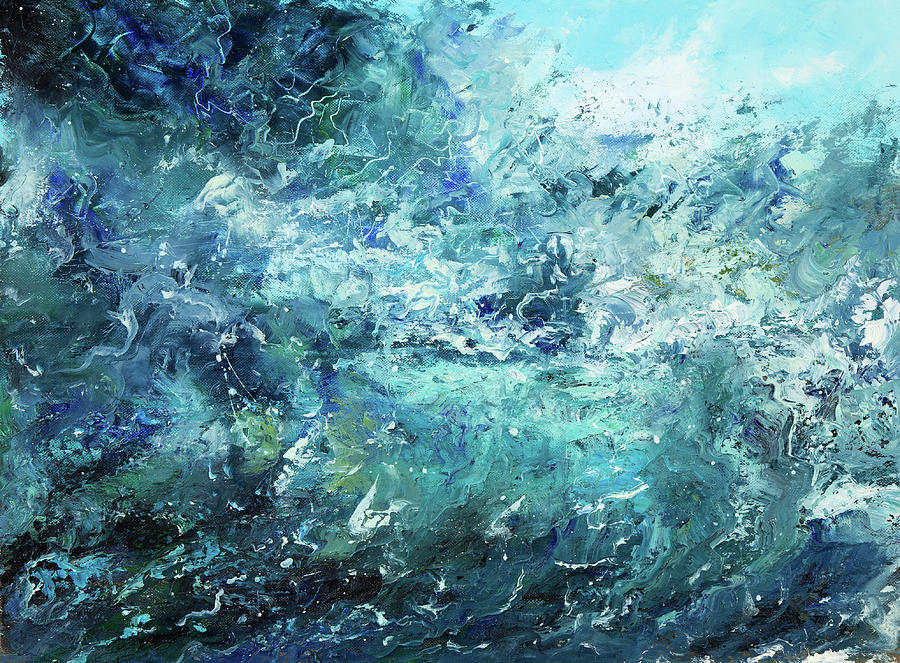Top 10 Ocean-Themed Photos That Inspire Calm

There's something inherently soothing about the ocean. Perhaps it's the rhythmic sound of waves, the endless horizon that puts our daily concerns into perspective, or the way sunlight dances on water. Ocean photography has the unique ability to transport viewers to a state of tranquility, making it one of the most sought-after genres for both personal and commercial use.
The therapeutic effects of ocean imagery are well-documented in psychological research. Studies have shown that viewing images of natural water scenes can reduce stress hormones, lower blood pressure, and promote feelings of calm and well-being. This phenomenon, sometimes called "blue mind," describes the meditative state triggered by water environments. It's no wonder that ocean-themed photography has become a staple in wellness centers, medical facilities, and homes around the world.
When curating ocean photographs for their calming properties, certain elements consistently emerge as particularly effective. Soft, muted color palettes dominated by blues, greens, and gentle earth tones create a sense of harmony and peace. Images with minimal contrast and smooth tonal transitions tend to be more soothing than those with harsh shadows or bright highlights. The presence of gentle movement—such as softly lapping waves or slowly drifting clouds—adds a dynamic quality that mimics the natural rhythms that our bodies find comforting.
Composition plays a crucial role in the calming effect of ocean photography. Images with clear, uncluttered horizons provide a sense of space and freedom that can help viewers feel less confined by their immediate surroundings. The rule of thirds, when applied to ocean scenes, often places the horizon in the lower third of the frame, emphasizing the vastness of sky and creating an uplifting feeling. Symmetrical compositions, particularly those featuring perfect reflections, can evoke a sense of balance and stability.
The time of day when ocean photographs are captured significantly impacts their emotional resonance. Golden hour images, taken during the first hour after sunrise or the last hour before sunset, bathe ocean scenes in warm, soft light that naturally promotes relaxation. Blue hour photography, captured during twilight, creates ethereal, dreamlike images that can transport viewers to a state of peaceful contemplation. Even overcast conditions can produce beautifully calming ocean images, as the diffused light eliminates harsh shadows and creates even, gentle illumination.
Minimalism in ocean photography often yields the most calming results. Images that focus on simple elements—a single wave, an empty beach, or the meeting point of sea and sky—allow viewers to project their own sense of peace onto the scene. These uncluttered compositions provide visual rest for minds overwhelmed by the complexity of modern life. The absence of human-made elements in these images further enhances their ability to provide escape and tranquility.
The technical aspects of ocean photography also contribute to its calming properties. Long exposure techniques, which blur moving water into smooth, silk-like textures, create images that feel almost otherworldly in their serenity. These techniques transform the chaotic energy of crashing waves into gentle, flowing forms that suggest continuous, peaceful motion. The resulting images often have a timeless quality that transcends the specific moment they were captured.
Color psychology plays a significant role in the calming effect of ocean imagery. Blue, the dominant color in most ocean photographs, is universally associated with tranquility, trust, and stability. Different shades of blue evoke different emotional responses: deep navy blues suggest depth and mystery, while lighter aqua tones feel fresh and rejuvenating. The presence of complementary colors, such as the warm oranges and pinks of sunset skies, creates visual harmony that feels naturally balanced and pleasing.
The scale and perspective in ocean photography can profoundly impact its emotional effect. Aerial shots that show the ocean's vastness can provide perspective on life's challenges, making problems seem smaller and more manageable. Close-up images of water textures and patterns can have a meditative quality, drawing viewers into contemplation of natural beauty and complexity. Wide-angle shots that include both sea and sky create a sense of openness and possibility.
Incorporating ocean photography into living and working spaces has become a popular way to bring the calming benefits of these images into daily life. Large-format prints can serve as focal points that transform the energy of a room, while smaller images can provide moments of visual respite throughout the day. The key is choosing images that resonate personally with the viewer, as the most calming photographs are often those that evoke positive memories or aspirations.
For photographers seeking to create calming ocean imagery, patience and mindfulness are essential. The most peaceful ocean photographs often emerge from quiet observation and waiting for the right moment when all elements—light, water, sky, and composition—align to create something truly transcendent. These images remind us that in our fast-paced world, there are still places and moments of perfect peace waiting to be discovered and shared.